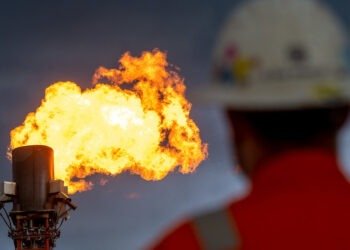Ghana Water Limited (GWL) has announced the commencement of a controlled spillage exercise from the Weija Dam in response to steadily rising water levels that now stand just two feet shy of the dam’s maximum safe threshold.
The move, described by GWL as a necessary precaution to protect both infrastructure and lives, marks a renewed phase of coordinated emergency management efforts aimed at averting a repeat of past flood disasters in communities downstream.
In an official statement, GWL revealed that the water level in the Weija Dam had reached 45 feet—dangerously close to the dam’s safe operational limit of 47 feet.
Given the continued rise in water levels, the management of the dam has opted to initiate minimal spillage to ease the pressure on the dam’s walls and ensure its structural integrity is not compromised.
“As the water level steadily increases, a controlled spillage has become necessary,” the statement said, adding that this proactive measure is aimed at forestalling any potential dam-related disasters that could devastate downstream settlements.

The precautionary spillage has triggered emergency alerts to several vulnerable communities along the river’s path.
Residents in Tetegu, Oblogo, Pambros Salt, Lower McCarthy Hill, Lower Weija, Bojo Beach, Adakope, and nearby settlements have been strongly advised to evacuate immediately.
These areas, historically known to be flood-prone during dam spillage periods, are now once again at the forefront of emergency risk mitigation efforts.
Call for Compliance
GWL’s management has urged affected residents to take the alert seriously, move to safer grounds, and comply fully with all instructions from disaster management agencies.
The company has emphasised that cooperation from the public is critical to preventing the loss of lives and property.
Ghana Water Limited, in collaboration with the National Disaster Management Organisation (NADMO), the Ga West Municipal Assembly, and other state agencies, is working tirelessly to ensure that the spillage is carried out safely and efficiently.
“The public is hereby urged to adhere strictly to directives issued by these agencies,” the statement read.

As part of the broader emergency response plan, the Ga West Municipal Assembly has been instructed to immediately desilt the estuary and clear refuse along the river’s course to allow for a free flow of the released water into the sea.
Blockages and debris in water pathways are known contributors to the flooding experienced in previous spillage events.
In an attempt to ensure that the warning and subsequent actions are well understood at the community level, the statement noted that GWL is also engaging traditional authorities, opinion leaders, and institutions located downstream.
Mobilization of Communities
Chiefs and heads of affected institutions were also notified to mobilise their communities and take the necessary precautions as the situation unfolded.
Over the years, the Weija Dam has played a critical role in supplying potable water to major parts of the Greater Accra Region.
However, its spillages, necessitated by heavy rainfall or rising water levels, have led to significant flooding in the past, with entire households displaced and properties destroyed.

This latest controlled release, GWL insisted, is designed to be minimal and carefully monitored to avoid triggering another humanitarian crisis.
For those seeking further clarity or guidance, GWL has directed the public to contact Mr. Stanley Martey, Head of Communications, via telephone at 0244 336 180 or by email at [smartey@gwcl.com.gh](mailto:smartey@gwcl.com.gh).
His office, according to the statement, remains open to inquiries from residents, the media, and other stakeholders concerned about the spillage exercise and its implications.
READ ALSO: EU’s 2024 Energy Payments to Russia Outpaced Ukraine Aid




















